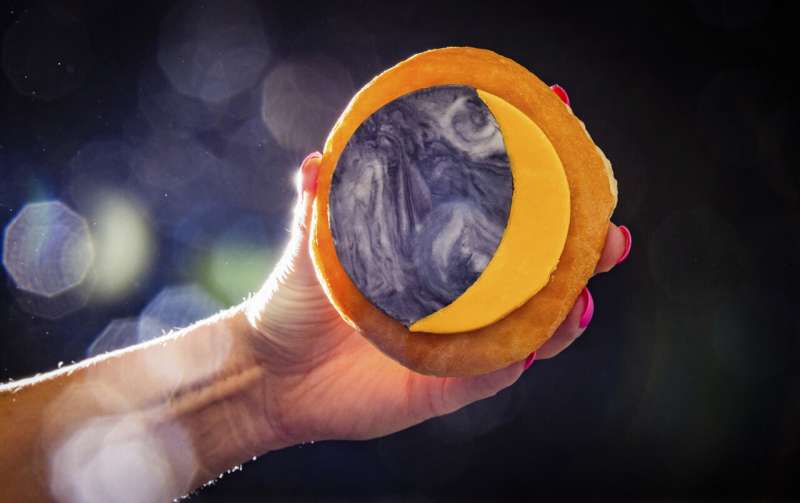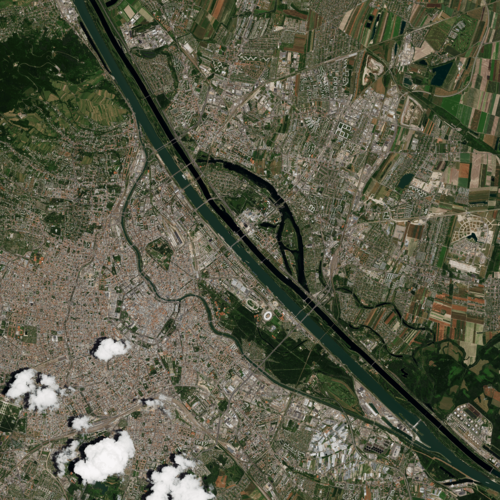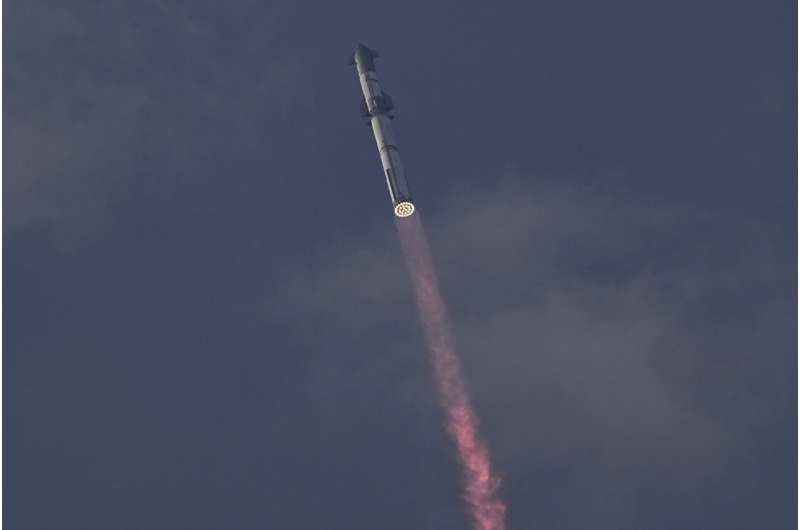Headaches Become More Common for Astronauts in Space
Friday, 15 March 2024 21:26 A recent study published in the online issue of Neurology, the medical journal of the American Academy of Neurology on March 13, 2024, has revealed that astronauts may experience headaches, including migraines and tension-type headaches, during prolonged space missions, even if they have no prior history of these conditions. The research underscores the impact of space travel on the human body,
A recent study published in the online issue of Neurology, the medical journal of the American Academy of Neurology on March 13, 2024, has revealed that astronauts may experience headaches, including migraines and tension-type headaches, during prolonged space missions, even if they have no prior history of these conditions. The research underscores the impact of space travel on the human body, AI Boosts Precision in Dark Energy Analysis, Reveals Universe's Expansion Secrets
Friday, 15 March 2024 21:26 In a study by UCL and the Dark Energy Survey collaboration, artificial intelligence (AI) has significantly refined our understanding of dark energy, doubling the precision of how we gauge the universe's key characteristics over the past seven billion years. By analyzing a comprehensive map of both dark and visible matter, this research provides a groundbreaking method for more accurately definin
In a study by UCL and the Dark Energy Survey collaboration, artificial intelligence (AI) has significantly refined our understanding of dark energy, doubling the precision of how we gauge the universe's key characteristics over the past seven billion years. By analyzing a comprehensive map of both dark and visible matter, this research provides a groundbreaking method for more accurately definin From Exploration to Exploitation: China's Lunar Strategy Shift
Friday, 15 March 2024 21:26 China's lunar exploration program, now in its 20th year, is setting its sights beyond mere exploration to harness the moon's resources, with a particular focus on using lunar materials for the betterment of humanity. Senior scientist Yang Mengfei of the China Academy of Space Technology highlighted the initiative's next phase involves deploying numerous robots to identify resource-rich sites on
China's lunar exploration program, now in its 20th year, is setting its sights beyond mere exploration to harness the moon's resources, with a particular focus on using lunar materials for the betterment of humanity. Senior scientist Yang Mengfei of the China Academy of Space Technology highlighted the initiative's next phase involves deploying numerous robots to identify resource-rich sites on Exploring Brain Function and Adaptation in Space: China's Innovative EEG Research Aboard Tiangong
Friday, 15 March 2024 21:26 In the unique microgravity environment of space, Chinese scientists are embarking on an ambitious journey aboard the Tiangong space station, about 400 km above Earth, to uncover how the human brain functions and adapts. This quest is central to China's manned space endeavors as the station transitions into a hub for scientific exploration.
At the heart of this exploration is the in-orbit e
In the unique microgravity environment of space, Chinese scientists are embarking on an ambitious journey aboard the Tiangong space station, about 400 km above Earth, to uncover how the human brain functions and adapts. This quest is central to China's manned space endeavors as the station transitions into a hub for scientific exploration.
At the heart of this exploration is the in-orbit e Lynk Expands Global Mobile Connectivity with Launch of Additional Space-Based Cell Towers
Friday, 15 March 2024 21:26 Lynk Global, Inc. has added two satellites to its network, launched via the SpaceX Transporter-10 rideshare mission from Vandenberg Space Force Base on March 4. This development is part of Lynk's strategy to offer satellite communication directly to mobile phones around the globe.
Lynk's technology enables direct satellite communication with standard, unmodified mobile phones. "These satel
Lynk Global, Inc. has added two satellites to its network, launched via the SpaceX Transporter-10 rideshare mission from Vandenberg Space Force Base on March 4. This development is part of Lynk's strategy to offer satellite communication directly to mobile phones around the globe.
Lynk's technology enables direct satellite communication with standard, unmodified mobile phones. "These satel Sierra Space Launches Axelerator: A New Incubator for Next-Gen Defense and Space Innovations
Friday, 15 March 2024 21:26 In a significant move to bolster defense and space technology, Sierra Space has introduced the Sierra Space Axelerator, a groundbreaking initiative aimed at accelerating the development of innovative defense technologies and solutions. This innovation incubator is designed to expedite the creation and deployment of novel defense products, marking a notable shift towards enhanced efficiency in th
In a significant move to bolster defense and space technology, Sierra Space has introduced the Sierra Space Axelerator, a groundbreaking initiative aimed at accelerating the development of innovative defense technologies and solutions. This innovation incubator is designed to expedite the creation and deployment of novel defense products, marking a notable shift towards enhanced efficiency in th Redwire looks to larger deals and new markets to fuel growth
Friday, 15 March 2024 17:41

Businesses are ready for April's total solar eclipse with celestial-themed doughnuts and beer
Friday, 15 March 2024 16:30

Eclipse-themed beer. Jewelry and ornaments. And doughnuts that capture the sun's disappearing act with the help of buttercream frosting.
With April 8's total solar eclipse right around the corner, businesses are ready for the celestial event that will dim skies along a generous path across North America.
Compact robot takes flight to support CERISS initiative
Friday, 15 March 2024 16:17
A new robot will be taking flight soon to test its ability to support biological and physical science experiments in microgravity. As one of NASA's 2023 TechFlights selections, this compact robot will have a chance to fly on a commercial suborbital flight to see just how well it can perform in a space environment.
Managed by NASA's Flight Opportunities program, the TechFlights 2023 solicitation included a call for technologies to support the agency's Commercially Enabled Rapid Space Science (CERISS) initiative. CERISS, administered by NASA's Biological and Physical Sciences Division, uses the spaceflight environment to study phenomena in ways that cannot be done on Earth.
One of the 11 TechFlights selections that will undergo flight testing is a compact robot designed to prepare samples for science experiments in microgravity, improve in-flight sample preparation capabilities and potentially reduce astronauts' time tending to such research while on the International Space Station or future commercial destinations in low Earth orbit.
Led by principal investigator Phil Putman, manager of advanced projects at Sierra Lobo, Inc, in Fremont, Ohio, the tests will leverage parabolic flights from Zero Gravity Corporation to evaluate the technology's performance in microgravity.
Koons on the Moon? Artists’ crucial role in shaping humanity’s image on Earth and beyond
Friday, 15 March 2024 13:30
Week in images: 11-15 March 2024
Friday, 15 March 2024 13:14
Week in images: 11-15 March 2024
Discover our week through the lens
Supporting rapid disaster response through space
Friday, 15 March 2024 08:20
ESA has launched a new partnership with industry through a project called SMART-CONNECT. The project aims to mitigate the challenges presented when traditional communication channels are disrupted during times of crisis, through facilitating the efficient and timely exchange of secure information between first responders and disaster control centres.
Earth from Space: Vienna, Austria
Friday, 15 March 2024 08:00 Image:
The historic centre of Vienna, Austria’s capital city, is featured in this image captured on 23 June 2023.
Image:
The historic centre of Vienna, Austria’s capital city, is featured in this image captured on 23 June 2023. SpaceX comes close to completing test flight of mega rocket but loses spacecraft near end
Friday, 15 March 2024 07:15
SpaceX came close to completing an hourlong test flight of its mega rocket on its third try Thursday, but the spacecraft was lost as it descended back to Earth.
The company said it lost contact with Starship as it neared its goal, a splashdown in the Indian Ocean. The first-stage booster also ended up in pieces, breaking apart much earlier in the flight over the Gulf of Mexico after launching from the southern tip of Texas near the Mexican border.
"The ship has been lost. So no splashdown today," said SpaceX's Dan Huot. "But again, it's incredible to see how much further we got this time around.


 Image:
Laser light sabre
Image:
Laser light sabre